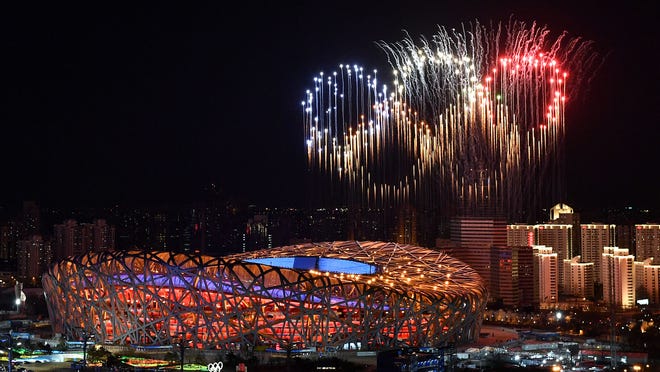5 story lines to watch at the 2022 Winter Olympics
 John Niyo
John Niyo
John Niyo of The Detroit News identifies five story lines to watch at the Olympic Games in Beijing.
COVID Zero?
Two years into a global pandemic, and six months after Tokyo managed to stage the Summer Olympics after a year’s delay, it’s China’s turn now. The host country has created a bubble in Beijing for thousands of athletes, coaches and officials from 91 nations, along with credentialed staff and media from around the world. But the pandemic playbook is considerably more complicated — and controversial — than it was in Tokyo, with vaccine mandates and a daily testing regimen only part of the so-called “COVID Zero” protocols. There are severe restrictions on movement, strict quarantine rules that include isolation facilities, and very little transparency from Chinese officials. Rights-holder NBC opted not to send its broadcast announcers to Beijing as a result, but questions about how all this may affect the athletes and the competitions will linger throughout these Olympics.

Playing politics
Beijing will be the first city to host both a Summer and Winter Olympics, but neither will go without controversy, as China’s history of human-rights abuses — notably in Hong Kong, Tibet and Xinjiang — draws scrutiny with the world congregating in its capital city. A U.S.-led diplomatic boycott by Western governments — Canada, Australia and Britain also won’t send any state officials to Beijing — is more symbolic than substantive considering authoritarian China's status as one of the world's two largest economies. But the issue of free speech is sure to come up, especially after a Beijing Olympic organizing committee warned athletes ahead of the Games that “any behavior or speech that is against the Olympic spirit, especially against the Chinese laws and regulations, are also subject to certain punishment.”
NHL on ice

For the second straight Winter Olympics, hockey’s best players won’t be participating, although this time it’s due to ongoing concerns about the pandemic. After opting not to send its athletes to the 2018 Games in South Korea, ostensibly over a dispute about travel costs, insurance and accommodations, the NHL did strike a deal to attend both these Olympics and the ’26 Games in Italy. But after COVID issues forced postponements of dozens of NHL games earlier this winter, and with uncertainty surrounding possible quarantine rules in Beijing, the league scrapped its plans for a three-week pause in its February schedule. Instead, the 12 countries that qualified for the tournament will ice rosters featuring a mix of college-age players and current and former pros playing elsewhere in North America, Europe and Russia.
'Winter' Olympics
Beijing’s winning Olympic bid promised snow, one way or another. So don’t be surprised when the NBC prime-time broadcasts portray a winter wonderland as the backdrop for these Games. But don’t be fooled, either, because nearly all of that snow is of the man-made variety, as Olympic organizers turn tens of millions of gallons of water into the venues for skiing and snowboarding. (The Yanqing zone that hosts the mountain events normally receives about 2 inches of snow annually.) Fake snow is hardly an Olympic novelty: Some 80-90% of the snow was artificial in 2014 and ‘18. But as was the case with the 2008 Summer Olympics in Beijing, Chinese officials may take it to an extreme, attempting to control the elements using a government-run “weather modification office” with cloud-seeding initiatives to increase precipitation and clear polluted skies.
Making progress
Gender equity still has a long way to go at the Winter Olympics. But changes to the Olympic program in Beijing are another sign of progress, as the disparity continues to shrink. More than 45% of the athletes in Beijing will be women, up from 41% at the 2018 Pyeongchang Olympics. (For Team USA, it's more than 48%.) And some of that remaining disparity has to do with the size of the Olympic hockey tournament, with two more men’s teams in the field. In bobsledding, the new monobob event is for women only in Beijing, 20 years after women first competed in the sport at the Olympics. There also are a handful of new mixed-gender team and relay events in short-track speedskating, freestyle skiing, snowboard cross and ski jumping. Another change you'll notice: It's women's figure skating now, not "ladies" after the International Skating Union officially changed its terminology last year.
john.niyo@detroitnews.com
Twitter: @JohnNiyo